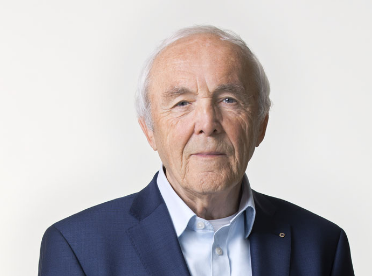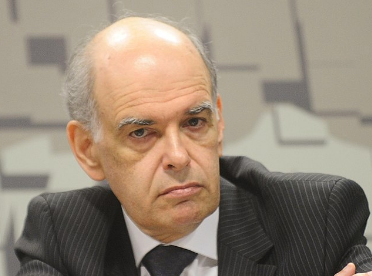Testimonial
DR. PROF. FRANK GÜNTER ZEHNDER
Art Historian, Germanyv

“Turbulenzen in Papier“ Aproaching the Unpredictable
…His pseudonym says something fundamental about his way of life and his artistic principles. His native town lies on the peaceful boundary between two nations which since his childhood has given him the experience of moving across borders, of both change and exchange.
Gustavo Dalinha, a child of the border, has always been a border‑crosser, one who with all his senses shares in the experiences of others, their life choices and working ways.
Brazil’s multiculturalism bombarded him with many influences, enabling him to absorb very different ethnic, religious and artistic currents. The balance between staying within bounds and overstepping bounds constantly spurred him to new explorations. In this way, the experiences of his childhood and youth, and the development of his early artwork constantly challenged his sense of family and love of his homeland. To know ones origins as well as being willing to move towards the unknown creates a solid foundation for the artistic relationship between tradition and innovation. Tying and untying bonds have determined Gustavo Dalinha’s life and artistic development for two decades. His travels, his shift of focus to Europe, and his cosmopolitan orientation have been necessary and consequential elements. The artist, who today lives in both Brazil and Germany (Berlin), is thus intensively participating in the globalization process, as exemplified by the worldwide movement of art and artists.
From these unique experiences, Gustavo Dalinha has developed an unmistakable signature style marked by a sensual treatment of color and structure. He does not proceed conceptually but empirically. His unique approach and the tactile pleasure of his material provide each new work with an a priori experimental character. Above all in his current work, he brings together sensual and spiritual impressions from two continents.
The unique handmade paper that the artist uses exclusively for his paintings is extraordinarily appealing. When the artist was on a trip to Madagascar in 1990, he fell immediately in love with this material.
…The artist’s pictures, which can more accurately be described as objects, do not incorporate conventional painterly illusions, but are physical and thus very concrete. Paint does not cover the objects like a blanket but follows the surface structure with great sensitivity. In this way Gustavo Dalinha attains a high degree of synthesis between materiality and spirituality, between picture structure and concept, and between work principle and experiment…
“The Power of Silent Forms“
The harmony of his paintings is not superficial, but a true effort in the search of perfection. This perfection and harmony are reflected in the enclosed geometric forms that not by chance were considered as references to God at the beginning of the Middle Ages…
…Every single existential and human theme is represented from birth to death. Joy, hardship, struggle, and victory are the subjects of his unpretentious paintings. Within a single piece of Gustavo Dalinha’s art often everything is said — observation is the only requirement. His paintings do not distract, but attract. His unpretentious paintings draw ones attention, and demand an internal and spiritual confrontation. His artistic discretion, formal as well as symbolic, defines an element of Dalinha’s artistic strength. This reductionism is not a loss, but a plus…
…Above all, what we find in his paintings is peace: this tranquility attracts and is also its theme. A certain sense of suspension communicates lightness, and this quietness in the evolution of movement leads to silence…
… His paintings symbolize the universe, with ideas that overwhelm all boundarie… In this material lies spiritual affirmation…
… The paper is also a carrier of history and of valuable stories. Along with the enthusiasm that a creative artist such as Gustavo Dalinha has for the future is a great respect for tradition. For Gustavo, this means searching for the past in the present. This is not an end in itself for the Antaimoro paper, since its past is not isolated, but must be documented as intimately interwoven with the living present. So the delicate exploration of the paper’s surface continues, the painting of the natural colors and earth tones, as well as the unusual themes and the world of meanings, with his dramatic investigative and silent spiritual revival…
… The works of Gustavo Dalinha move away from the eyes and lead to the interior. Perhaps, now more than ever, we need such paintings. Only those that fear will depart empty. But those that seek to accept his art, will be rewarded with new opportunities for contemplation and the possibility of meditation and a wider perspective.

